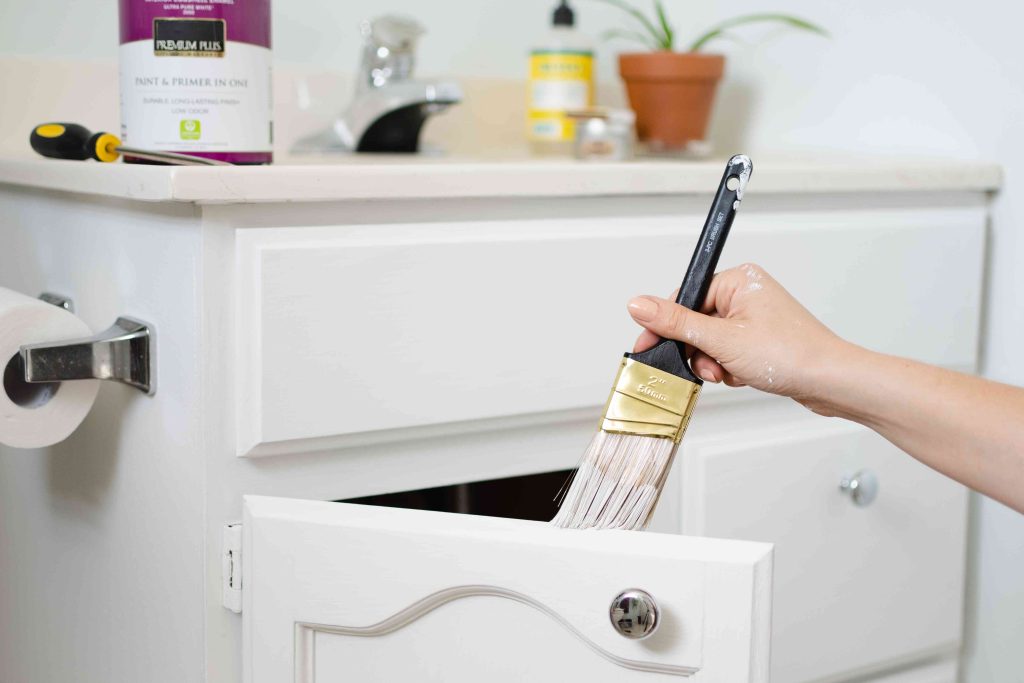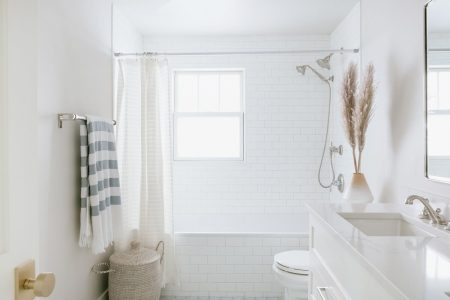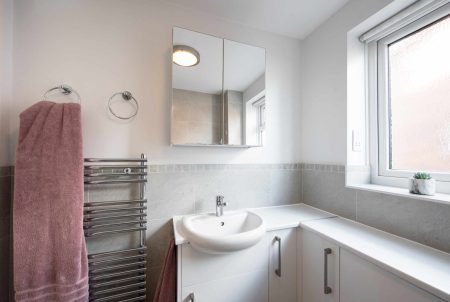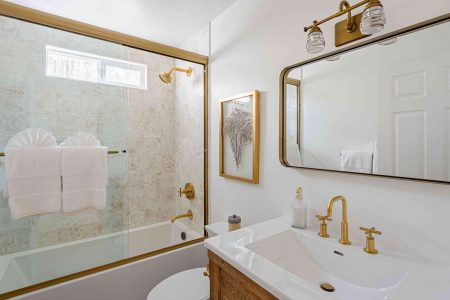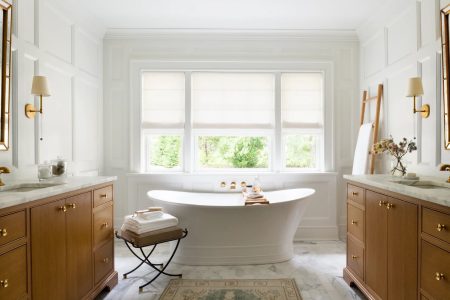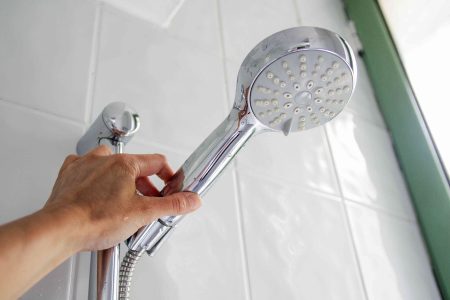Painting cabinets is a logical step in a cost-effective bathroom revival project. Few things can transform a space as easily as a cabinet upgrade. Given the steep price of new bathroom cabinets, even homeowners who detest painting may begin to entertain the possibility, as it can save a great deal of money while making the bathroom look great.
This project can easily take a couple of weekends, depending upon how extensive the work is. But if you’re willing to take your time to do it right, a new paint job will last for years and look just as good as you hoped.
Basics of Painting Bathroom Cabinets
Wood bathroom cabinets are the easiest to paint. Moving between similar materials is usually the best path to success with this project. Other surfaces, such as melamine or thermofoil, can be painted as well, but the results may not be as satisfactory as with wood.
If you can remove the bathroom cabinets, your task will be much easier. You will not have to worry about the paint overlapping on walls or spilling on the counter or floor. Even if you cannot remove the cabinet, you should be able to remove the cabinet doors.
Bathroom Cabinet Paint Options
There are two types of paint that you can use for this job: water-based and oil-based. Oil-based paint dries to a durable finish that works well in high-traffic areas and is less likely to show brushstrokes than water-based paint. However, oil-based paint takes longer to dry, and the paint tools must be cleaned up with chemical solvents.
Water-based (latex) paint dries quickly and can be cleaned up with water. Use a semi-gloss, satin, or gloss paint; these are durable and easy to clean. For durability and quality, look for a 100 percent acrylic enamel formula.
Warning
Oil-based paint should always be applied in an extremely well-ventilated area. If you cannot move the cabinets to an open area or ventilated garage, make sure that you wear a respirator and that you have a steady flow of air from the bathroom to the outside.
Preparation
Remove all objects from the cabinets and drawers. Spread drop cloths around the work area to prevent getting paint on your floors. Apply painter’s tape to any surface you want to protect, such as countertops where they join the cabinets.
Place a small piece of painter’s tape on the interior of each cabinet door and drawer. Label each piece to identify which cabinet it belongs to.
Use a screwdriver or drill to remove the doors and hinges from the cabinets. Remove the drawers, then remove the drawer fronts from the drawer boxes, if possible. If removal is not possible, leave the fronts attached and mask off the fronts from the boxes.
What You’ll Need
Equipment / Tools
- Bucket
- Sponge
- Rubber gloves
- Marker
- Screwdriver or cordless drill
- Putty knife
- Primer
- Paint tray
- Paint sprayer or paint roller with a smooth-nap cover
- Natural- or synthetic-bristle paintbrush
Materials
- Drop cloths
- Painter’s tape
- TSP (trisodium phosphate) or TSP substitute
- Wood putty
- 150-grit sandpaper
- Tack cloth (optional)
- Paint primer
- Paint
- New hinges (optional)
- New knobs or pulls (optional)
Instructions
-
Clean the Cabinets
Clean the outside surfaces of the cabinet boxes and the doors and drawer fronts with TSP (or a less-toxic substitute) to remove all grease and grime. If you’re painting the cabinet interiors, clean those as well.
Warning
Trisodium phosphate (TSP) is an effective, inexpensive solution. It is a mild skin irritant, so make sure to wear rubber gloves when working with a TSP solution.
Some communities ban TSP and other phosphate-based soaps. If that’s the case, you can still find effective TSP substitutes (often called “TSP substitute”) in stock at most hardware stores or home centers.
-
Patch and Sand
Inspect the cabinet boxes, doors, and drawers for nicks and dings. Use a putty knife and wood putty to repair any damage. Smooth the putty with the knife and allow it to dry, then sand it smooth. Lightly sand the outside of the cabinets as well as the doors and drawer fronts, using 220-grit sandpaper. This will help the primer and paint adhere to the surface.
Wipe down the surfaces with a damp cloth to remove dust. For a really clean surface, wipe again with a tack cloth after the cabinets dry.
-
Apply Primer
Apply an even coat of primer to the exposed surfaces of the cabinet boxes and all of the doors and drawer fronts, using a sprayer, roller, or brush. A sprayer, which you can rent at some hardware stores, works best for this job. If you use a brush, paint with long, smooth, even motions so the brushstrokes are not visible. Don’t forget to paint the edges of the cabinet doors.
Allow the primer to dry completely, as directed by the manufacturer.
-
Sand Primer
Lightly sand the primer coat if the primer manufacturer’s directions require it, using 220 grit or finer sandpaper.
-
Apply the First Coat of Paint
Apply the first coat of paint to doors, drawer fronts, and cabinet boxes. If you are using water-based paint, use a synthetic paintbrush or a sprayer. Oil-based paints require a natural-bristle brush or a sprayer. Don’t forget to paint both sides of the doors; it’s usually easiest to allow the fronts to dry completely before painting the backs. Allow the paint to dry as directed.
-
Apply the Second Coat of Paint
Apply a second coat of paint to all surfaces and allow it to dry for 24 hours, or for whatever full cure time is specified by the manufacturer. This may be one week or more. This allows the finish to harden before the cabinets are returned to normal use.
-
Reassemble the Cabinets
Reattach the old hardware or attach new hardware. Attach the doors to the cabinet boxes, and reattach the drawer fronts to the drawer boxes, if you’ve removed them. Slide the drawers back in place.
Read the full article here







